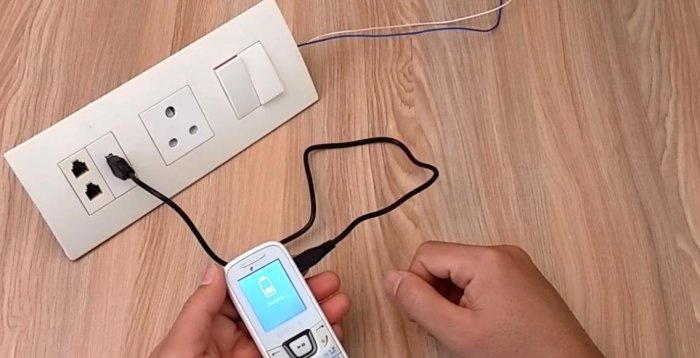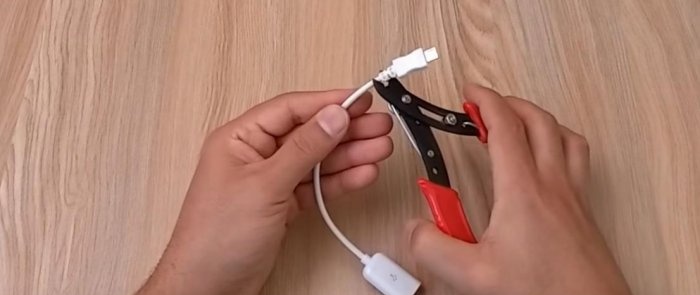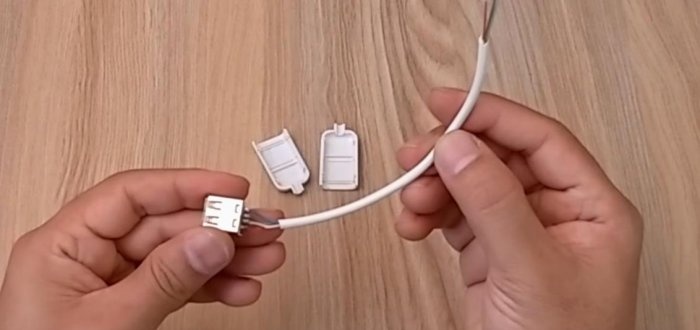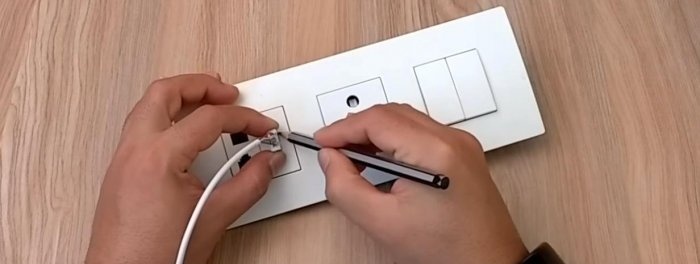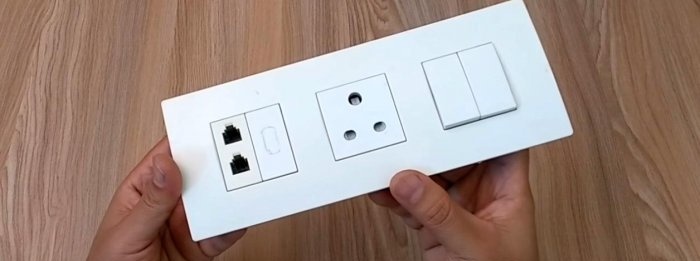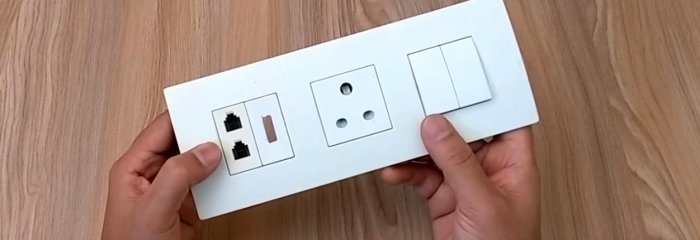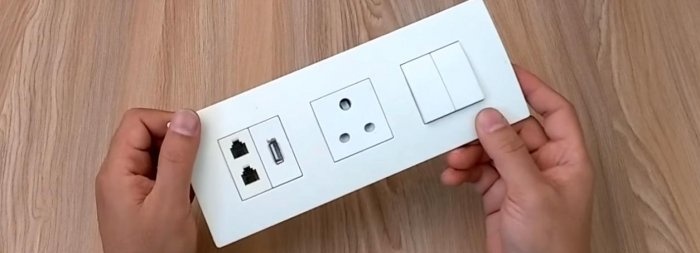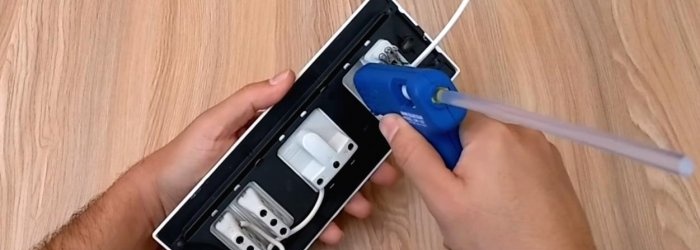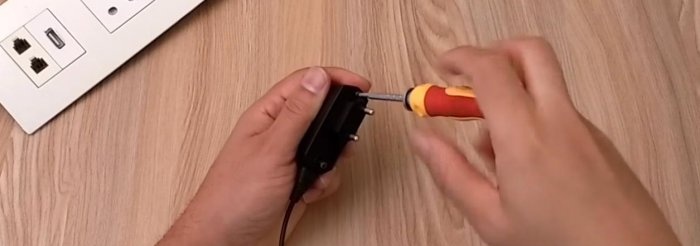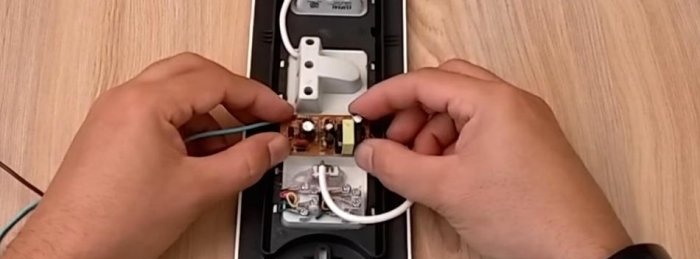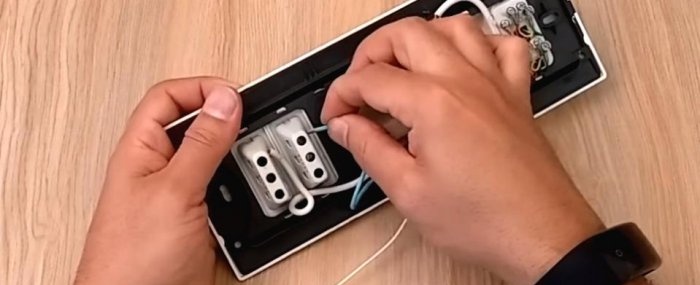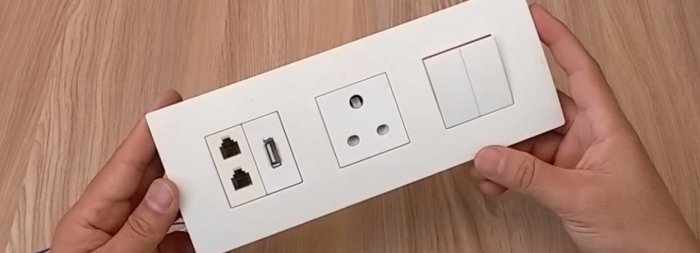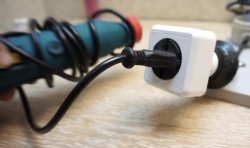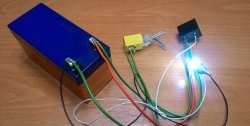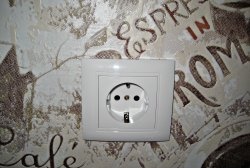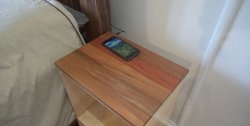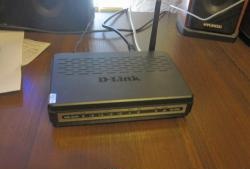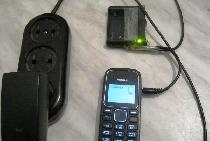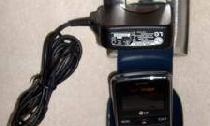Now almost all portable equipment is charging from USB ports and this is a big plus, since you do not need to make dozens of different connectors for all devices.
I will show how to integrate the charger into a power outlet.
Making an outlet with a USB output
First you need to find a USB outlet. I will take the adapter and cut it off.
I will disassemble the connector and here it is - the future USB socket.
I will install the connector next to the telephone jacks, because there is room. You can choose another option. We attach the connector, circle with a pencil.
Next, we cut a hole with a mini circular saw, making an allowance inside the hole so that the nest does not fall inside. This can also be done with a flat-head screwdriver heated by fire. Or in another way.
Insert the USB connector. I hope you did not go too far and everything went right. It will be great if it comes in tightly and does not hang out.
On the reverse side we fix it with hot glue. Everything should be held securely.
We take an unnecessary charger at 5 V. It is desirable with a load capacity of one ampere. And take it apart.
We take out the charger board.
We solder wires from it. Two network and two five-volt.
We connect to our outlet with a USB output.
Solder the wires to USB. Plus to plus, minus to minus. Be careful - do not confuse.
Solder network, it is advisable to take them thicker.
The board, on the output side of the contacts, is poured abundantly with hot glue and glued to the socket body itself. Hot glue does not conduct electricity and there can be no short circuits.
We connect network wires. To prevent the power supply from working 24 hours a day, I highlighted one switch button for it. We connect to the outlet in series with it.
Result
Ready outlet with USB output. Everything looks like it was being sold. It certainly pleases me.
Work check
Connect to check the mains voltage. Connect the phone through the adapter cable. Turn on the switch. Charging has gone - it means everything is working properly.
